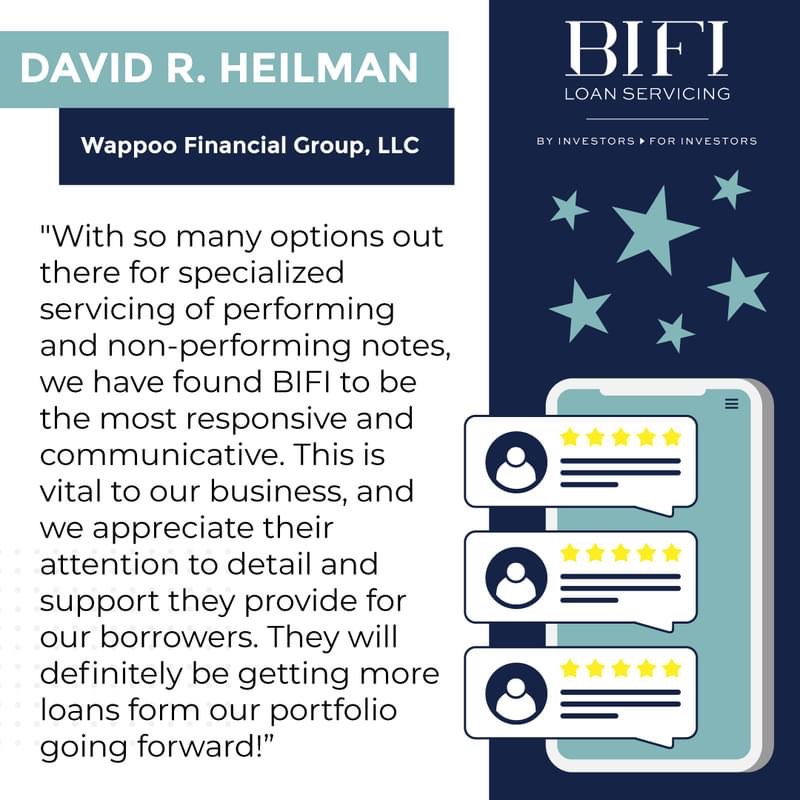Introduction
In the complex landscape of financial investments, note investing emerges as a unique and potentially lucrative avenue. Central to this practice is the concept of loan servicing, a pivotal element that ensures the smooth operation and profitability of loan-based investments. This article serves as a foundational guide for note investors, providing a comprehensive overview of loan servicing, detailing its role within investment management, exploring the lifecycle of a loan, and underscoring its importance in risk management and enhancing investor returns.
What is Loan Servicing?
Loan servicing is the process by which a company (the loan servicer) manages the administration of a loan portfolio on behalf of a lender or note investor. This management includes collecting monthly payments from borrowers, maintaining records of payments and balances, managing escrow accounts, generating statements for borrowers, and handling the administrative aspects of any defaults and foreclosures.
In essence, loan servicers act as the intermediary between the borrower and the lender or investor, ensuring that the latter receives consistent returns on their investments and that the terms of the loan are being adhered to.
Role in Investment Management
For note investors, loan servicing is not just a logistical task; it is a crucial component of investment management. Effective loan servicing plays a vital role in ensuring the stability and reliability of cash flows, which are key determinants of the investment’s value.
By optimizing the collection process and ensuring compliance with loan terms, loan servicers help maintain and potentially increase the value of a note. Moreover, they provide detailed reporting and analytics that aid investors in making informed decisions about their portfolios, whether it’s considering further investments, restructuring existing loans, or managing risk.
Lifecycle of a Loan: From Origination to Payoff
Understanding the lifecycle of a loan is essential for anyone involved in note investing. This lifecycle begins with the loan origination process, where borrowers are assessed for creditworthiness, and the terms of the loan are established. Here’s a closer look at each stage:
1. Origination: This initial phase involves the creation of the loan, where borrowers apply and are vetted for creditworthiness. Loan terms, including interest rate, repayment schedule, and loan amount, are set based on the borrower’s financial situation.
2. Funding: Once the loan is approved, the funding phase begins. Here, the loan amount is disbursed to the borrower, marking the beginning of the investment for the note holder.
3. Servicing: During this ongoing phase, the loan servicer collects monthly payments from the borrower, manages the loan’s administrative tasks, and ensures compliance with the terms of the loan. This is a critical phase for note investors, as the consistent flow of payments represents the return on their investment.
4. Maintenance and Compliance: Throughout the loan’s term, the servicer manages all necessary documentation, ensures regulatory compliance, and handles communication with the borrower. This includes managing escrow accounts for taxes and insurance, if applicable.
5. Resolution of Non-performance: If a borrower fails to make payments, the servicer steps in to manage the default process. This could involve loan modification, foreclosure, or other loss mitigation processes, depending on the circumstances.
6. Payoff/End of Loan: The lifecycle concludes when the loan is fully paid off or otherwise terminated (e.g., through refinancing or foreclosure). Successful completion of the loan term typically results in full return of principal and interest to the investor, barring any defaults.
Importance of Loan Servicing in Risk Management and Investor Returns
Effective loan servicing is integral to risk management in note investing. By diligently monitoring borrower payments and compliance, servicers can quickly identify issues that might jeopardize the investment, such as potential defaults or disruptions in cash flow. Early detection allows for prompt corrective actions, thereby minimizing potential losses and protecting the investor’s capital.
Moreover, comprehensive loan servicing contributes to enhanced investor returns by maintaining a high level of borrower compliance and minimizing costly legal battles and foreclosure processes. Efficient servicers also employ strategies to rehabilitate loans where possible, preserving the value of the investment and even enhancing it through fees and penalty interest collected on late payments.
Conclusion
Loan servicing is more than a mere administrative task; it is a cornerstone of successful note investing. It ensures that loans are not only paid back in a timely manner but also managed in a way that aligns with the investor’s risk tolerance and return expectations.
For anyone looking to dive into note investing, understanding and leveraging the nuances of loan servicing can be a significant advantage, providing a clear path to more stable and rewarding investment outcomes.
![]()
Ready to get started with BIFI Loan Servicing?
Get started on our website here: https://bifils.com






